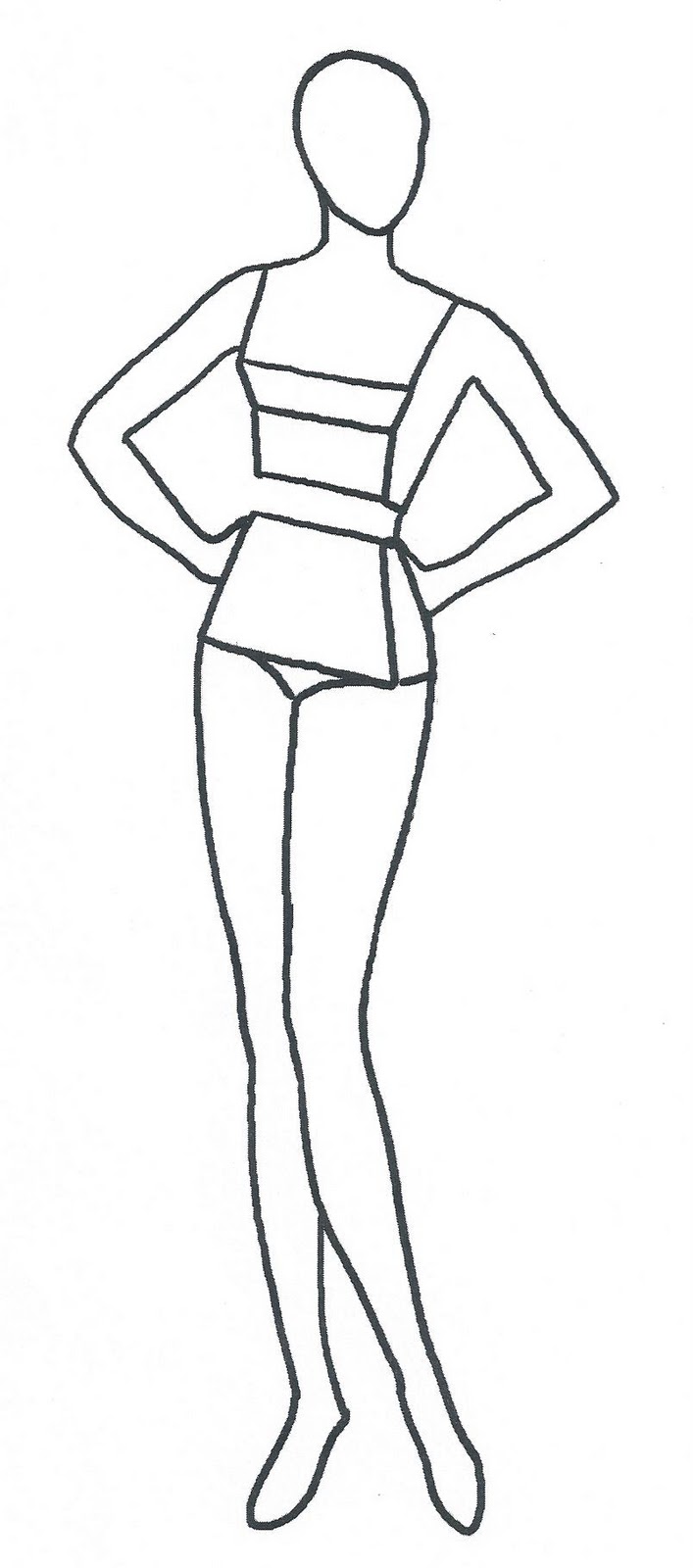
Sometimes it’s all for the sake of dreaming, and other times I use what’s in my closet. One of my favorite time-saving tricks using MyBodyModel is to use quick sketches to ‘try on’ patterns I’m thinking of buying or for trying different outfit combinations together. Since the MyBodyModel template makes it very quick to have an accurate figure of myself, I love that I’m able to quickly create multiple sketches as an idea evolves. Nowadays, it depends on the project as to whether I use drawing to come up with the initial idea or somewhere else along the way of making a garment. Though my sketching process was more structured when I started out, recently I’ve been focusing on sewing for the love of creativity. Pictured here are the sketch and toile of a Wilder Blouse and my skirt version of the Varma shorts by Named Clothing. “For the first time I was really able to see the lines of my body instead of imagining clothes on an unrealistic ideal.” – Amanda The MyBodyModel croquis is really like a grown-up paper doll that helps you appreciate your own proportions and plan your sewing projects in a way that honors your unique form.
#Sketch fashion figures how to
Ultimately, I’ve learned it’s not necessarily as important to know which specific Kibbe type you fit in as much as it is to understand how to dress your own individual proportions and shapes. Kibbe experts often recommend drawing the shape of your body over a photograph of yourself, but MyBodyModel takes that idea to the next level. It’s a great system, but one of its biggest flaws is that it’s not easy for most people to be able to see themselves objectively. There is no one ideal to strive for other than your own best self. The key to great personal style in the Kibbe philosophy is making the most of your own unique balance of visual elements: vertical vs. a skinny hourglass), but rather provides a spectrum of different physical archetypes that can help you understand your own proportions. In a nutshell, the Kibbe system rejects the idea that people should try to fit an ideal figure (i.e. This makes it so much easier to visualize how an outfit will look on me!Ībout a year into my wardrobe sewing journey, I stumbled into the world of Kibbe body typing, a personal styling system based on the book Metamorphosis by David Kibbe. On the left is one of my fashion sketches on a traditional 9-head fashion croquis, and on the right is a sketch on my MyBodyModel croquis, made to my actual measurements.

For the most part these designs lived on paper for fun and creative expression, and it didn’t really occur to me that I could bring them to life for everyday wear. I managed to hang onto the paper template they gave me for many years, and I got a lot of practice drawing clothes on these exaggerated fashion figures.



I was introduced to the traditional nine-head fashion croquis as a recent high school grad, when I attended a fashion sketching workshop at the Fashion Institute of Design and Merchandising. “The MyBodyModel croquis is really like a grown-up paper doll that helps you appreciate your own proportions and plan your sewing projects in a way that honors your unique form.” – Amanda She shares her personal fashion journey, and walks us through her updated sketching process for “trying on” new designs, pattern hacks, & outfit ideas with confidence. After years of imagining clothes on unrealistic figures, Amanda has completely transformed her fashion sketching process to design in a way that honors her body and style.


 0 kommentar(er)
0 kommentar(er)
